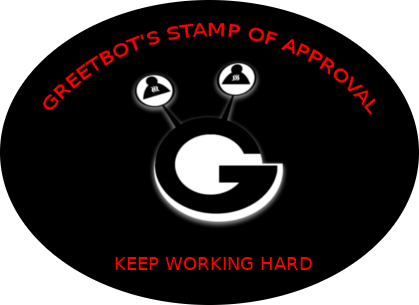“All of us are entrepreneurs, We are all born with innate ability to survive; survival involves innovative thinking..When we think innovating and act on that innovation we are entrepreneurs”
After short refresher about entrepreneurship mindset, we were introduced the concept of disruption in Entrepreneurship.
Anytime you introduce change or new ways of thinking there is a possibility of failure. In this path you will find many success stories and also boneyards of failures, not to be discouraged as many successful companies were build upon foundations of failures during early experimentation and testing process. “The best advice I’ve heard about it is quite simple: Don’t look down; don’t focus on the obstacles. Look in the direction you want to go, and that’s where you’ll end up. Focus, vision and a clear view of your endgame are the ingredients for success—and for disruption.” Amy Cooper Fobers
In essence, Disruption takes left turn by literally uprooting and changing how we do business, learn, go about our day to day. In large scale, disruption at once destroys and creates, it displaces existing market, technology, industry and produces something new, more efficient and worthwhile For e.g. Airbnb disrupting hotel industries. Disruption can also be small as finding innovate and creative ways provide value to the market. For e.g. A small town in Italy wanted to invite Foo fighters so 1,000 musicians collaborated to record a video “Learn to Fly” and personally invite the band to join them. The video was impressive and received over 30 million views on YouTube. The lead singer, Dave Grohl, of the Foo Fighters was inspired, moved and agreed to play a show in Cesena, Italy. More examples of disruptions
Clayton Christensen from his 1997 book “The Innovator’s Dilemma”. Christensen defined disruptive innovation as still a type of innovation but different from the more common types of sustaining and radical innovation. According to Christensen, disruptive innovations create value along a different dimension from existing offerings, and subsequently “disrupt” the incumbent companies, businesses and markets.
Disruption in Tech
“Disruption is nothing but changing your basic organisational structure”, ‘say Sushma Rajagopalan, Founder of ITC Infotech.
Technology has always been hotbed of innovation and disruption. Mr. Christensen separates new technology into two categories:
Sustaining : Sustaining technology relies on incremental improvements to an already established technology.
Disruptive : Disruptive technology lacks refinement, often has performance problems because it is new, appeals to a limited audience and may not yet have a proven practical application. (Such was the case with Alexander Graham Bell’s “electrical speech machine,” which we now call the telephone.)
Here are a few examples of disruptive technologies:
The personal computer (PC) displaced the typewriter and forever changed the way we work and communicate.
The Windows operating system’s combination of affordability and a user-friendly interface was instrumental in the rapid development of the personal computing industry in the 1990s. Personal computing disrupted the television industry, as well as a great number of other activities.
Email transformed the way we communicating, largely displacing letter-writing and disrupting the postal and greeting card industries.
Cell phones made it possible for people to call us anywhere and disrupted the telecom industry.
The laptop computer and mobile computing made a mobile workforce possible and made it possible for people to connect to corporate networks and collaborate from anywhere. In many organisation, laptops replaced desktops.
Smartphones largely replaced cell phones and PDAs and, because of the available apps, also disrupted: pocket cameras, MP3 players, calculators and GPS devices, among many other possibilities. For some mobile users, smartphones often replace laptops. Others prefer a tablet.
Cloud computing has been a hugely disruptive technology in the business world, displacing many resources that would conventionally have been located in-house or provided as a traditionally hosted service.
Social networking has had a major impact on the way we communicate and — especially for personal use — has disrupted telephone, email, instant messaging and event planning.
Creative disruption of self
Disruption can be applied to personal development as well, with ever increasing technologies coming out (such as A.I. etc.), fast lane modern life style, ever changing culture it becomes utmost important for anyone to creatively reinvent themselves almost every decade. According to research our current generation needs to reinvent them selves at least 7 time sin our life times.
Article : Reinvent yourself! Major life changes are never easy, because your instincts and the urgent matters of the day work against you. But when you learn to focus on your future self, you’ll be surprised at what you can achieve.
Bibliography
https://iidjournal.wordpress.com/2017/01/25/disruption-2412017/
Resteemed by @resteembot! Good Luck!
The resteem was payed by @greetbot
Curious?
The @resteembot's introduction post
Get more from @resteembot with the #resteembotsentme initiative
Check out the great posts I already resteemed.
Downvoting a post can decrease pending rewards and make it less visible. Common reasons:
Submit
Hi. I am @greetbot - a bot that uses AI to look for newbies who write good content.

I found your post and decided to help you get noticed.
I will pay a resteeming service to resteem your post,
and I'll give you my stamp of automatic approval!
Downvoting a post can decrease pending rewards and make it less visible. Common reasons:
Submit